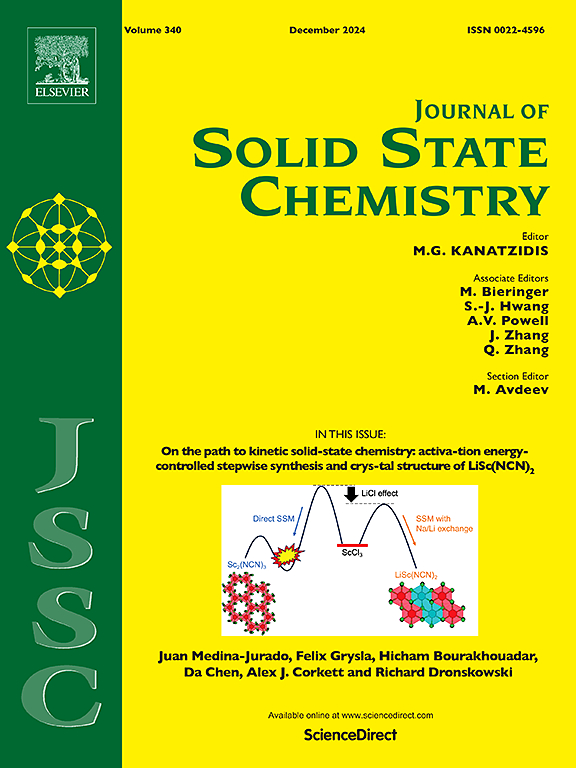Preparation and electrochemical lithium storage properties of Cu2SnS3@C nanocomposites
IF 3.2
3区 化学
Q2 CHEMISTRY, INORGANIC & NUCLEAR
引用次数: 0
Abstract
Cu2SnS3, recognized as a conversion and alloy type anode material for lithium-ion batteries, possesses a high theoretical specific capacity of 784 mAh g−1 and exhibits a distinct lithium storage mechanism. However, its intrinsically low electrical conductivity and pronounced volume expansion during cycling pose significant challenges to its practical battery performance. To address these limitations, Cu2SnS3@C (CTS@C) nanomaterials were synthesized by a one-step microwave-assisted method, utilizing ethylene glycol as a solvent and glucose as a carbon precursor. The incorporation of a carbon coating has been demonstrated to markedly improve the conductivity of the material and mitigate the volume expansion associated with lithium insertion and extraction. Electrochemical tests revealed that the CTS@C electrode exhibits superior electrochemical performance. Specifically, the CTS@C electrodes exhibited an initial discharge capacity of 612.8 mAh g−1, with a retention of 295.8 mAh g−1 after 500 cycles at a current density of 500 mA g−1. The carbon coating not only effectively enhances the conductivity of the electrode material, but also accelerates the electrochemical reaction rate, and enhances the diffusion rate of lithium ions, thereby significantly improving the electrochemical performance of the battery.

求助全文
约1分钟内获得全文
求助全文
来源期刊

Journal of Solid State Chemistry
化学-无机化学与核化学
CiteScore
6.00
自引率
9.10%
发文量
848
审稿时长
25 days
期刊介绍:
Covering major developments in the field of solid state chemistry and related areas such as ceramics and amorphous materials, the Journal of Solid State Chemistry features studies of chemical, structural, thermodynamic, electronic, magnetic, and optical properties and processes in solids.
 求助内容:
求助内容: 应助结果提醒方式:
应助结果提醒方式:


